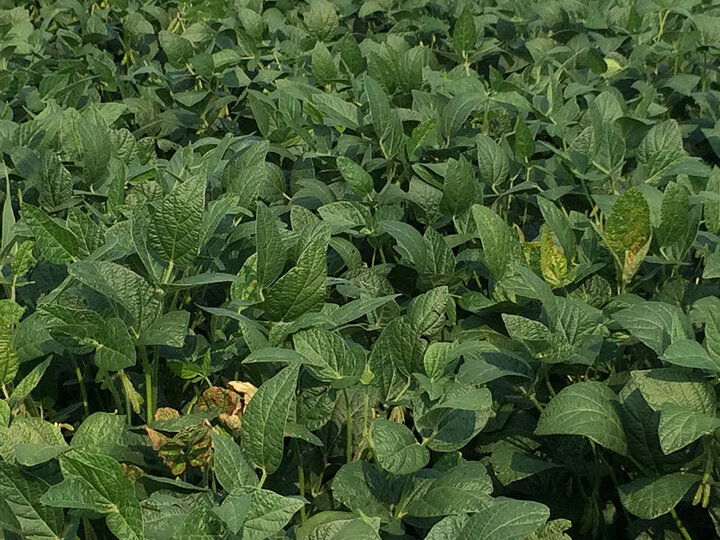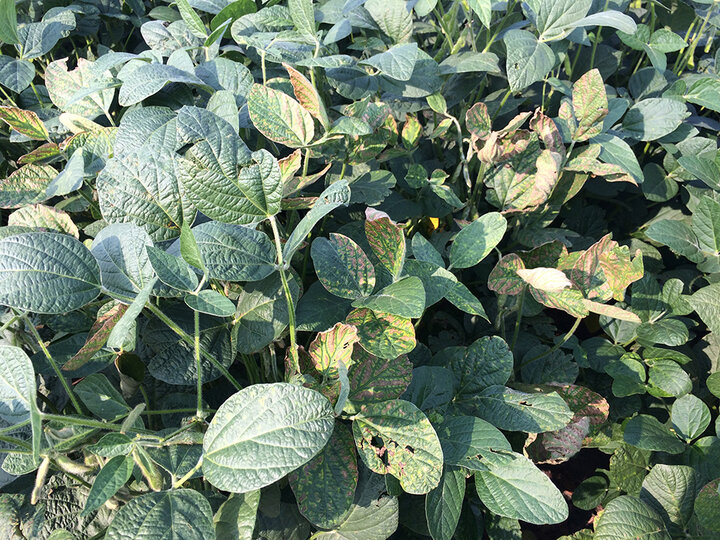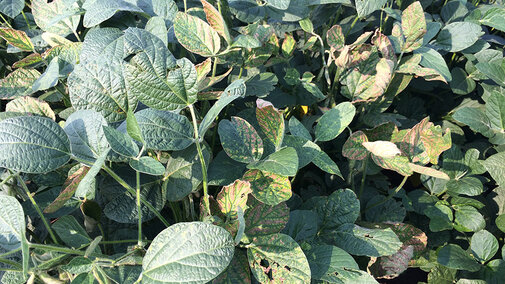Last Friday Sudden Death Syndrome (SDS) was found in soybean near Sutherland in west central Nebraska. The low areas of the field were most affected with a disease incidence level of 20%.
The disease is caused by Fusarium virguliforme, a soilborne fungus. SDS is more common in eastern Nebraska and rarely seen this far west. The cool wet conditions in the area early this growing season were favorable to its development. High moisture levels at flowering also promote disease development. It is crucial to monitor fields and ensure that diseases are correctly identified for proper management.
Symptoms of SDS include scattered, yellow spots between the veins of upper leaves in the canopy (Figure 1). The spots may enlarge and coalesce to form large streaks or blotches between the leaf veins while the leaf veins and major lateral veins will remain green. At advanced stages, the leaflets will drop while the petioles remain attached to the stems (Figure 2). When stems are split, the color of the pith is white, a key symptom to help differentiate SDS from brown stem rot, which has a discolored pith. Additionally, infected plants will pull easily because the tap root has rotted and there is little structure to anchor the plant.
Management
There are no fungicide spray treatments for SDS. The following strategies are important for the next time soybeans are grown in the same field.
- Plant treated seeds. ILeVO® seed treatment by Bayer Crop Science has been reported to have activity against SDS.
- Select cultivars that have partial resistance to SDS and contain a soybean cyst nematode (SCN) resistance gene. SCN weakens the plant and can increase SDS levels.
- Avoid early planting, reduce compaction, and improve soil drainage.
Rotation with corn is not an effective management strategy. Although the pathogen does not cause disease on corn, it can survive in corn residue.
Resources
For more information see Nebraska Extension NebGuide, Sudden Death Syndrome of Soybean. Also see the Soybean Disease Management section of CropWatch.



